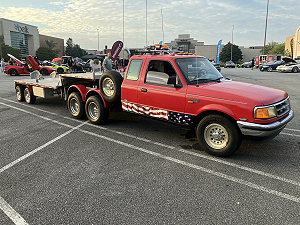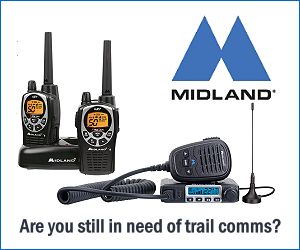um, I think 28.6 * $.1 = $2.86/month not 2.86 cents. correct me if I'm wrong.
As to pressures, if they warm up after a mile or so, isn't -that- the pressure you're really interested in? since that's what's there under use?
I appreciate the tables and add'l info on it.
I've yet to try airing down for off road but want to try it. I didn't have any issues going places (if clearances were ok) but it can get bumpy as all get out so if it softened the ride a little, that would be nice.
Right now I've been running 31 psi all around (at 70F), I'll probably have to add a bit as the weather cools. And I'll do another water test to check tread contact, but I think it's good, and it drives nice on the highway, neither heavy steering (admittedly power steering may disguise that some were it there) nor wandering, feels nice and secure. Loving the K02's. Real quiet on the road but lots of grip for off road. They do collect some gravel in the tread and you hear it coming off when you get back on the road at speed. Ping.
So it means under driving, they're probably a bit higher psi than at 70F but whatever it is, seems good, I could measure them warm just for s/g.
I agree with the approach to find what drives nice and has good contact patch and assume that whatever it is at the ambient air measurement it'll be slightly higher in actual use; but no need to overthink it, unless you find it drives weird or you see uneven wear.
The industry standard is to check the tires when cold as being best practice for the most accurate reading since there are too many variables to account for when driving. Yest, the tire pressure will go up while driving but not by a whole lot, usually. About 1 to 2 psi on average and is not a concern since there is a buffer built into the capability of the tires by the tire manufacturer. Like many things, the tires are generally under rated for a built in safety factor because what should happen and what does happen in the real world are two very different things.
As far as tire pressures for off road, what you are driving on will dictate what is generally best for traction and rolling resistance. The lower the pressure, the higher the rolling resistance will be and thus more fuel will be used. So it's a balancing act.
Here is the numbers I use for my Rangers and my utility trailer. These numbers are generally agreed upon by experienced off roaders and overlanders for non-bead locked tires. Focus on the percentages and not the psi numbers I am using. Each vehicle is different. So the numbers you end up with may be different. The one caution I would make is to not go below 15 psi with a non-bead locked tire. You could end up with a bead separation.
HOW LOW CAN YOU GO?
Just how much do you air down? Obviously, it depends on conditions, but also on the normal street pressure you run, which might be 35 psi in a Tacoma, or 65 in a 9,000-pound Sports mobile on big E-rated tires.
25%
Trailer – 26 psi
2011 Ranger – 27 psi
2019 Ranger – 23 psi
As a (very) rough guide, dropping pressure about 25 percent will significantly increase traction and comfort on
rough dirt roads, washboards, and moderate trails.
30-35%
Trailer – 25 to 23 psi
2011 Ranger – 25 to 23 psi
2019 Ranger – 21 to 20 psi
Dropping 30 to 35 percent elongates the tire’s footprint enough to enhance grip on
slick rock, and allows it to deform around and cling to big rocks.
50%
Trailer – 18 psi
2011 Ranger – 18 psi
2019 Ranger – 15 psi
Heading down to 50 percent, even a bit less, will nearly double the length of the contact patch to float over
very soft sand.














